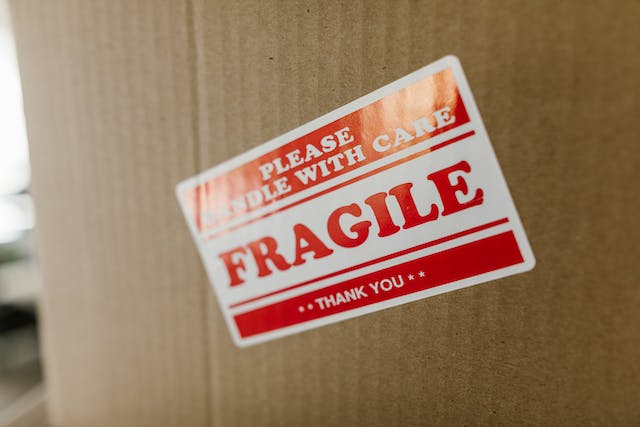
 A Clear Path Editorial Team
A Clear Path Editorial TeamMoving homes, a task that often brings a mix of excitement and anxiety hinges significantly on how well you pack and then unpack afterward. A critical part of this process is ensuring you properly pack your essentials and valuables. This article is designed to provide a comprehensive checklist and valuable tips to make your move as organized as possible. Our goal is to help you navigate through this hectic time with ease. Following our guidelines, you can ensure that your essential items and valuable belongings are safely and efficiently packed, reducing the risk of damage or loss during the relocation.

Valuables are things like family heirlooms and expensive jewelry.
Understanding what falls under essentials and valuables is crucial for a successful relocation. Daily necessities include clothing, medication, toiletries, and important documents. They are the items you’ll need immediate access to during and right after your relocation. On the other hand, valuables include jewelry, family heirlooms, expensive electronics, and artwork. These things often have high monetary or sentimental value and require extra care during prepping and transportation. Identifying these items early on in the process is crucial. Doing so allows you to allocate the right resources and attention to ensure their safety. Think about what you use daily and what items you would be devastated to lose.

Writing a detailed home inventory is useful when trying to pack your essentials and valuables with care.
To properly pack your essentials and valuables, you must do some prepping first. Begin by creating a detailed home inventory of all your belongings. This list will become an invaluable reference point throughout the moving process. It helps keep track of your items and ensures nothing gets lost or forgotten. Next, focus on decluttering. Go through your belongings and make decisions on what to keep, what to donate, and what to discard. That will lighten your load and also simplify the process. After decluttering, it’s time to source quality packing materials. Invest in sturdy boxes, bubble wrap, paper, and strong tape. High-quality materials protect your belongings and ensure they survive the move without damage.
Essentials are the backbone of your daily routine and should be handled carefully. These include personal documents (passports, birth certificates, financial records), basic toiletries (toothbrush, toothpaste, soap), and enough clothes for a few days. To ensure these essentials are easily accessible, pack them in a separate box or suitcase and clearly label it as ‘Essentials.’ This box should be the last one loaded onto the truck and the first one taken out upon arrival. Consider the specific needs of all family members, including pets, when preparing this box. For instance, if you have a baby, include diapers and feeding supplies. For pets, include food and a favorite toy. By thoughtfully handling your essentials, you can maintain a semblance of normalcy during the chaos of moving.
When it comes to valuables, a tailored approach is needed. Each category demands specific packing strategies, from jewelry and small heirlooms to art pieces and delicate electronics. For instance, jewelry and small heirlooms should be secured in boxes or compact containers cushioned with bubble wrap. Art and fragile items require even more care; consider custom crates or padded boxes. Ideally, use their original packaging or boxes with ample padding and protection when dealing with electronics. That is where exploring moving supplies for breakables becomes crucial. These specialized supplies, designed for packing fragile items, can significantly reduce the risk of damage during transit. Also, consider insurance for high-value items; it offers peace of mind against potential loss or damage. When loading these valuables, consider their placement in the moving truck. They should be situated securely and away from boxes that might shift.

Labeling your boxes and adding a FRAGILE sticker is essential.
The organization is key to a successful move. Start by categorizing your items. You might do this by room (kitchen, bedroom, etc.) or by item type (books, clothes, dishes). Once categorized, pack and label each box accordingly. Effective labeling involves more than just writing the room name on the box. Consider adding a brief description of the contents and any special handling instructions, like ‘Fragile’ or ‘This Side Up.’ Color coding can also be a useful strategy. Assign a color to each room and use corresponding colored stickers or markers for the boxes belonging to that room. Additionally, keeping a master inventory list that details what’s in each box can be incredibly helpful. This list aids in keeping track of your belongings and makes unpacking and finding specific items in your new home much more efficient.
Proper handling and transportation are crucial to ensure the safety of your belongings. If hiring a moving service, research and choose a reputable company with good reviews and reliable service. Clearly communicate with the relocation specialists about which boxes contain fragile items. If you’re moving them yourself, pack the moving vehicle with care. Heavier boxes should go on the bottom, and fragile items should be securely placed to prevent shifting. Always lift boxes with your legs, not your back, to avoid injury. Secure all items in the vehicle to prevent them from moving or falling during transport. When you arrive at your new home, unload it with the same care and attention. By prioritizing the safety of your belongings during handling and transport, you can avoid damage and ensure everything arrives in good condition.
As your moving day approaches, a few final tips and tricks can ensure a smooth transition. Here are some key points to keep in mind:
To ensure a smooth and stress-free moving experience, remember to plan and pack your essentials and valuables carefully. We hope these tips and tricks help you feel more prepared and confident about your move. If you have any moving stories or additional tips to share, we would love to hear them!
Ready to make your move a smooth sailing? Visit aclearpath.net for professional organizing and packing services tailored to your needs. Let our experts help pack your essentials and valuables efficiently, ensuring a stress-free moving experience. Click now to start your journey to a clutter-free and organized move!